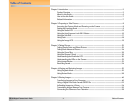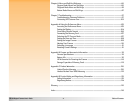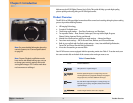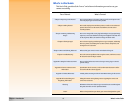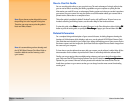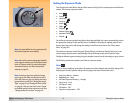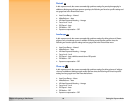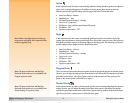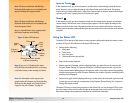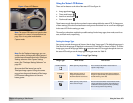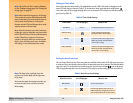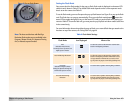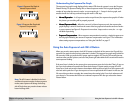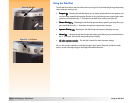
Chapter 2: Preparing to Take Pictures 11 Setting the Exposure Mode
Action
In this exposure mode, the camera automatically optimizes settings for taking pictures of subjects in
action, such as people playing sports. In addition to biasing toward faster shutter speeds, the
following are forced to specific settings and are grayed-out in the Photo Assist menu:
Auto Focus Range
−
Normal
White Balance
−
Auto
AE (Auto Exposure) Metering
−
Average
Focus Lock
−
Continuous
ISO Speed
−
Auto, with bias toward faster ISO speeds
EV Bracket
−
Off
Exposure compensation
−
Off
Night
Note: When using Night exposure mode, you
may want to use a tripod, since exposures in this
mode are typically long.
In this exposure mode, the camera automatically optimizes for dark scenes taken at night. The
camera opens the shutter to collect ambient light. Then, if the flash is turned on, the camera fires the
flash at the end of the exposure to illuminate objects in the foreground. The following are forced to
specific settings and are grayed-out in the Photo Assist menu:
Auto Focus Range
−
Normal
White Balance
−
Auto
AE (Auto Exposure) Metering
−
Average
Focus Lock
−
Lock
ISO Speed
−
Auto
EV Bracket
−
Off
Exposure compensation
−
Off
Program Mode
Note: The Auto and the Auto with Red-Eye
Reduction flash modes are not available in the
Program exposure mode.
This is an auto exposure mode where the camera selects an appropriate aperture and shutter speed.
However, you can adjust all settings in the Photo Assist menu in this mode. The settings remain when
you switch modes (that is, move from Capture mode to another mode) and when you cycle the
power on the camera (power it off and then on again).
Shutter Priority
Note: The Auto and the Auto with Red-Eye
Reduction flash modes are not available in the
Shutter Priority (Tv) exposure mode.
In this exposure mode, you select a shutter speed, and the camera automatically selects the aperture
setting. However, you can adjust all settings in the Photo Assist menu in this mode. The settings
remain when you switch modes (that is, move from Capture mode to another mode) and when you
cycle the power on the camera (power it off and then on again).



